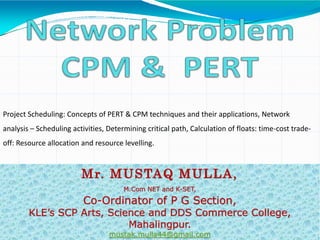This document discusses project scheduling concepts like PERT and CPM. It defines a project and provides examples. It explains key aspects of project scheduling including network analysis, determining critical paths, calculating floats, and allocating resources. It also discusses constructing PERT/CPM networks and numbering events. It covers procedures for determining earliest and latest times, float/slack times, and identifying the critical path. The document is an overview of fundamental concepts for project scheduling and critical path analysis.


















































